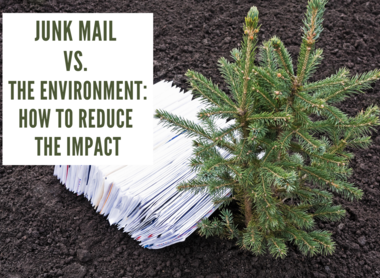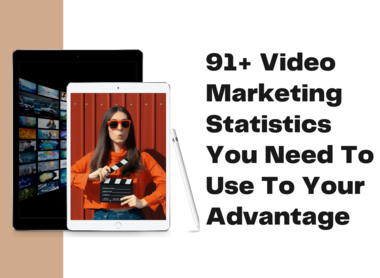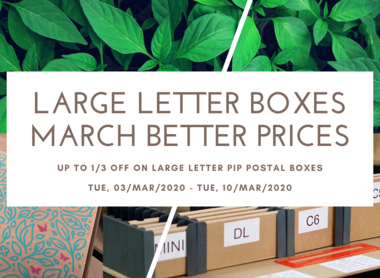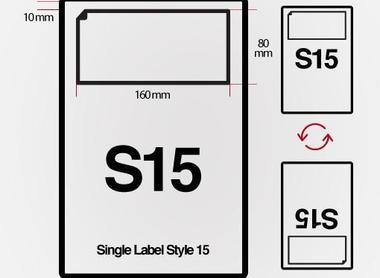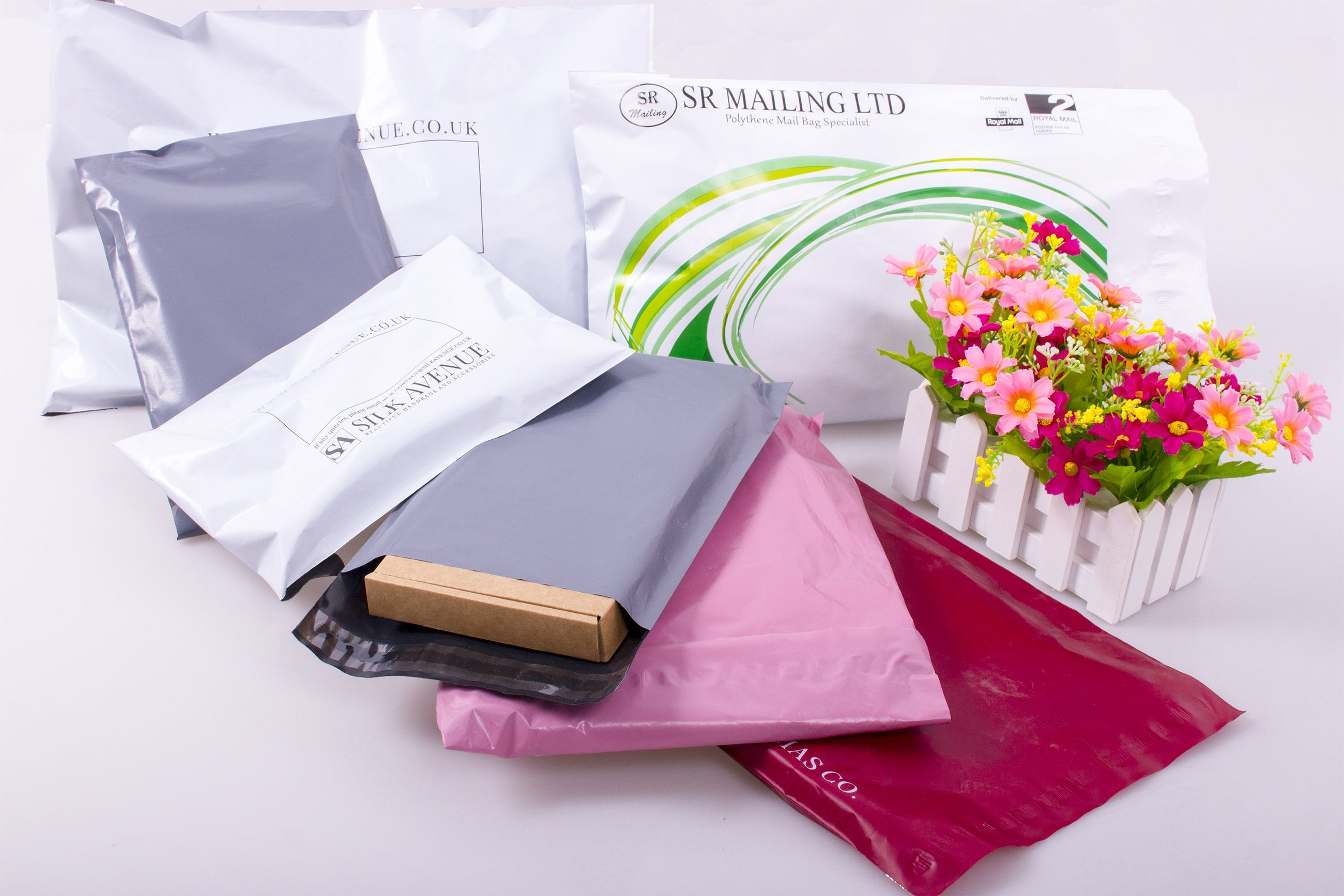What Is Inbound Marketing?
Inbound marketing is one category of marketing activity that businesses can use to reach their customers, and within inbound marketing there are a number of different strategies and tactics that can be used. There are no ‘right or wrong’, or ‘one-size fits all’ approaches to inbound marketing, and it is a much less intrusive way of getting your business in front of your target customers. With less intrusive approaches, it means that marketing materials are much more likely to be positively received, and therefore customers are more likely to make a purchase, or engage with you – which is exactly what you want and need.

What Is Inbound Marketing?
Inbound marketing is the type of marketing that focuses on the customer – catering to their desires and needs, and provides answers for customers that are making decisions about the right solution for them.
By looking at the pain points of target customers, inbound marketing provides solutions. Businesses create assets that are engaging at each step in the journey to purchase, in order to attract customers, to nurture them, and to convince them that they have found the best product, which leads to them making their purchase. Post-sale, inbound marketing is still relevant, providing information about how to use their item, or about which other products may be right for them, delighting them and encouraging customer loyalty.
The emphasis of inbound marketing is on creating content that leads to understanding, and that can be optimised for use across different media – from blog content, to video, and social media posts. But it isn’t just the content and how it is used it that is important, it is also ensuring that it is interesting to customers, and that will encourage them to move through the sales funnel. By understanding of the needs of target customers, and their pain points that need solutions, marketing professionals can personalise the customer experience with their inbound marketing activity.
What is outbound marketing?
Where inbound marketing is focused on the buyer, and their needs, outbound marketing tends to take a more traditional paid media approach, using strategies such as TV and radio ads, billboards, and direct mail marketing, as well as popups, video ads or search spam. The aim of outbound marketing is to get customers to know what you sell, to become aware of your business, and to increase interest in the products, rather than engaging with you as a company and understanding why you do what you do.
Although there are benefits to using outbound marketing, the effects are less enduring than those provided by inbound marketing, which is why many businesses are now making the switch.

How is inbound marketing different to digital marketing?
Digital marketing is an over-arching term for many types of online marketing activity, and digital marketing tactics can be used for both inbound and outbound strategies, depending on how they are used.
Digital strategies that can be used for inbound marketing can be split into three main categories: owned media, earned media, and paid media. When you’re using each type of media in harmony together, this is known as media convergence.
Owned media is everything that you have complete control over, and that you are free to use and reuse as you see fit. Examples include your branding, your website and blog, your social media accounts, email distribution list and email content, and any longer-form content created by your team such as eBooks, training videos and so on.
Earned media is established by how your content is received by both your customers, and the wider industry. Relying on earned media can be risky, since it can include negative feedback which may influence potential customers and whether they decide to engage with your business or not. Examples can include social media shares and comments, media coverage of your business, your products or services, and content shared by strategic partnerships.
Paid media is exactly what it sounds like – when businesses pay to have marketing materials published. Examples include PPC marketing, promoted social media posts, search engine marketing, and sponsored posts that are published on other websites.

Why Is Inbound Marketing Used?
There are really solid reasons that inbound marketing is used by businesses. We’ve already mentioned that it is less intrusive than outbound marketing, but that isn’t the only reason – let’s dive into the other benefits of inbound next.
It is more effective than outbound
More than ever today, customers want to avoid marketing materials – they don’t enjoy feeling that they are being sold to. And so customers are actively choosing not to engage with it.
- Ignoring TV advertising by muting their TV during ad breaks
- Streaming TV content to avoid ads completely
- Using adblockers in their web browser
- Skipping ahead during video ads on platforms like YouTube
- Fast forwarding during podcast advertising
- Recycling direct mail without opening it
While some types of outbound strategies will continue to be used by some businesses, inbound marketing is much more effective, since customers have the choice to engage with it on their terms, and inbound is designed to be helpful for the customer. It is this helpfulness – and the fact that businesses can create the best type of content for all types of customers – that increases the chances of customers converting.
Inbound marketing allows businesses to reach customers at all stages of the journey to purchase
Done well, inbound marketing content can help support customers whichever stage they are at in their journey to purchase. The three stages of the journey to purchase are well known amongst marketing professionals, but here’s a quick recap:
Awareness – where the customer is experiencing a problem, and is researching the issue to help them understand and label their problem.
Consideration – the customer has identified their problem, and is now actively looking for a solution to that problem.
Decision – the customer has decided the best solution for their problem, and is now searching for the businesses that can supply the solution for them.
Once customers find, and engage with useful content from a business, they are more likely to share their contact information, and then, they may ask questions (offering the team the chance to share more relevant content) and to make their purchase.
The fact that marketing materials can be used by sales teams, and that it illustrates the expertise of the business (which is a major factor in building trust) is why it is essential for businesses to create content that customers will find useful, at every point in the customer journey.
It can continue to build audiences and brand recognition
Having a great collection of detailed blog posts, informational YouTube clips and so on helps to build that customer trust that we just mentioned. But it is also great for increasing your SEO, because it helps to illustrate your expertise, authority, and trust to the search engines – meaning that when searching for relevant terms, customers will see your content at to top of the search engine results pages.
And that isn’t all – when businesses create really useful information, it doesn’t just get seen by one customer – it gets shared. That’s great for increasing the number of potential customers that come to know about your business, and increases the likelihood of more customers purchasing from you.
HubSpot do this brilliantly – their blog is absolutely packed full of really interesting, engaging, and useful content. While this is great for their SEO, it is also great for raising their brand profile too. Although some customers won’t convert to paying for HubSpot’s marketing, sales and service software, people that have found those blogs useful will share them, and talk about HubSpot because of them, building even greater brand recognition.
It offers a service for potential customers
Inbound marketing is a much kinder approach than outbound, since it offers help for people, either allowing them to understand their pain points, or to understand the best ways to resolve those issues. While inbound marketing might feel like a softer approach, it still offers great returns for businesses. Customers benefit from inbound, since it is educational, informational, or entertaining, and it is precisely because of that, that they are more likely to work with the business that created that content. Customers learn they can trust the business, and are more likely to share their discovery with other potential customers too.
It can provide qualified leads
Inbound is all about raising brand awareness, but where customers see your materials, they are much more likely to be encouraged into the sales funnel with you, and to convert to a paying customer. That’s because they already know that they can trust you. As a business, since you control the type of inbound content that you create, you can create the right type of content to encourage the exact type of leads that you want to engage with you – or to encourage purchases to be made.

It is time efficient
When your business is already working at full capacity, it makes sense to get marketing activity done quickly too. Although there are some tasks that can take up time – such as writing a great blog post – there are ways and means of automating tasks that need to be done regularly. Using tools to schedule emails and social media posts, to monitor for mentions of your company name, and to handle your reporting are just some of the ways that you can keep your inbound marketing activity running smoothly.
Outsourcing inbound marketing tasks such as blog writing and social media management is an option to help you too – freeing your time up to run your business.
It is cost effective and provides good ROI
Since inbound marketing assets are all digital, costs tend to be lower than with outbound, meaning businesses can do more, with smaller budgets – which is great for smaller companies that can’t invest huge amounts as yet. Inbound provides a better return on investment, and can be incredibly economical, since many of the assets can be repurposed.
Inbound marketing assets are not only less expensive to produce, but they are also more likely to bring more customers that are actually interested in your business – and are more likely to convert to paid. When you consider that outbound tactics include mass media adverts (TV, radio, print, billboards, and static adverts such as on public transport) that are seen by a lot more people than actually want to engage with your business, inbound makes much more sense.
It allows for campaigns to be integrated
Businesses don’t just do marketing on one channel – and inbound allows your marketing activity on each of those channels to be cohesive, and make sense if customers see more than one of your assets. So, you might write a great blog post about how a new product solves a problem, and from there, share on your social media posts, discuss it on a podcast episode, mention it on a YouTube video, and across your paid campaigns too.
The whole team can be involved
Rather than your marketing experts solely handling your inbound marketing, there are opportunities for all the team to get involved. Most importantly, the sales team and support staff can identify the type of assets that would help them to work more effectively, but where you have an expert on your team, they can help add value to the assets – contributing to a video, or provide snippets for a blog, for example.
It is easy to measure ROI
There is little point to creating campaigns that you can’t measure the effectiveness of. Businesses need to know that their investment is performing – and with a great CRM, this is easy to measure. By checking analytics and data, you can identify what works, what doesn’t, and continue to increase the performance of your marketing efforts.

Are There Any Challenges With Inbound Marketing?
While inbound marketing is more likely to be received positively by potential customers, some businesses find it isn’t always as straightforward as it first appears. Inbound marketing does have challenges, but being prepared for them ahead of time means that you can minimise the potential for disruption.
- When customers don’t engage
This is a challenge that plenty of businesses face – they’re creating content, but customers simply aren’t engaging. Most often, this is seen when there is a poor user experience on the company’s website, and can be seen when checking bounce rates, and the time that visitors to the website spend on pages. Where there is a poor website experience, bounce rates will be high, and time on page low.
The way to resolve this is to fix the issues that cause them to become disengaged. This means ensuring the website works as intended, fixing issues on pages, and ensuring a good experience on mobile devices.
- Failing to establish a clear strategy
Jumping in without a plan rarely leads to success, and inbound marketing is no different. Knowing exactly where you need content, the stages of the customer journey that are being targeted, and the strategies that you’re using before you start means you’re more likely to see better results.
- You don’t see immediate returns
Unfortunately, you don’t start to see returns with your inbound marketing immediately, and this is where CEOs that have been convinced to give it a go, but only give it six months to prove it come unstuck. While instant results are great (which is why paid ads are so popular) there is so much more to be gained with inbound marketing if you stick with it over the longer term.
Managing the expectations of the managers is key here – inbound marketing is a marathon, rather than a sprint, and creating it is an investment in the future of the business. When you create really great, evergreen content for your business, you have that content forever – and great content can continue to drive traffic for as long as it is relevant. It can be refreshed periodically, and can be repurposed, reworked, and reused in different forms, allowing for much bigger returns.
- Insufficient resources
We’ve all heard managers say variations on ‘not enough people’ or ‘not enough money’. Unfortunately, inbound marketing is often rejected by businesses because of these reasons – which is frustrating for those of us who know just how valuable it is, and the size of the potential returns.
The easiest solution for this issue is to outsource. By outsourcing inbound marketing tasks to agencies, or freelance content producers, you can ensure that you get the content you need, at a price that is affordable (particularly when the return on investment is seen), leaving staff free to focus on their priorities.
- The content doesn’t include calls to action
If inbound marketing is getting the right amount of attention from potential customers – bounce rates are low and time spent on the page is high – but the number of conversions isn’t reflecting that, then there may be issues with the number of calls to action. Optimising content to convert is the solution, and ensuring that the right type of calls to action are included as the content is being created.
- There isn’t an integrated approach
Where businesses don’t plan for their inbound marketing, they often haven’t connected everything up, meaning that their efforts are less likely to provide the level of success the business needs. A few examples:
- The marketing team are creating fantastic content but the sales team need other content to help create sales
- There is no connection between blog content, social media campaigns, and YouTube videos
- You’re using a number of tools to help run your digital marketing, but they don’t connect, so you can’t accurately measure how well your efforts are performing
By planning before implementing an inbound marketing strategy, you can ensure that your content does exactly what the business needs, that it presents an organised, well thought out approach, and the success can be measured accurately.

What Inbound Marketing Strategies Should Be Used?
Inbound marketing tends to be more strategic – you want the right type of customer to see your activity – and therefore not every type of strategy is likely to be right for every type of business, or even between different marketing campaigns. There are three main inbound marketing strategies that can be used to help target your marketing – attracting strategies, engaging strategies, and delighting strategies.
Attracting strategies
While certain types of content will attract all kinds of people, what you really want is customers to land on your website. Attracting strategies help encourage the right type of visitor to your website, and mean that they are more likely to convert.
Ads
Search engine marketing and paid social marketing can be used to help encourage customers to click through to your website. By targeting your ads, they will be seen by the right type of person – meaning you’ll see a better return on the investment.
Blog posts
Blog posts are an incredibly effective way to bring traffic to your website – particularly if it provides answers that your target customer is likely to have, or helps them to solve a problem in their everyday life. Adding links to your other blog content, as well as to videos or social media, and pointing your customer to the solution to their problem means that customers will remember your content, refer to it again, and think of your website when they need to buy products or solutions that you provide.
Video
Video can be a powerful way to attract website visitors too, and there are a number of ways in which you can post videos to be found online. YouTube is a good place to start, as well as posting on social media, while adding video pages and blog posts (where it is relevant) means that they will stay on the page for longer, which has been shown to increase SEO, and conversions.
Social publishing
Your social media channels are a really powerful way to attract visitors to your website, and to encourage repeat custom. Using your social media to share content, as well as creating original content will help to raise brand awareness, encourage visits to your website, and to increase trust for new customers.
SEO
Getting your brand message to the right type of customers is easier when you’ve carried out keyword research, you’ve optimised your content and you’re sure you’re linking to the right type of pages. By ensuring your SEO activity is done well, you’ll help your content to be seen above other websites on search engine results, meaning that your content is much more likely to be trusted and clicked on.
Optimising your pages
Once you’ve done the hard work of getting potential customers to click through to your website, the aim is to keep them there. Ensuring that your internal links are effective means that customers find even more value from being on your website, and are encouraged to look more at what you are offering. The longer they’re on your website, the greater the chance that they will convert to a paying customer – if not on that occasion, then in the future.
Engaging strategies
Once you have done the hard work of encouraging customers to your website, you don’t want to lose them – you want them to engage with you. Some of the best strategies, once implemented, don’t even take up much of your time, so you’ll be freed to focus on other activities.
Standard and popup forms
Standard forms are used on landing pages as a tool for lead generation and conversion. They should be as simple as possible, and they should connect directly with your customer relationship management system (a CRM) so that contact details are stored accurately.
Popup forms should be used in a similar way, but they can be set to display in whichever position on the screen makes the most sense. They’re more likely to be completed by customers if they are interactive, and like standard forms, they should connect directly to your CRM.
Lead management
Looking after your customers is essential – and that includes after they have used your business. Taking care of customer data, following up with them after their purchases, and sending them offers to encourage repeat custom are all important for the long-term success of your business.
Email marketing
Email marketing can be part of your lead management strategy, but should be done carefully. Spamming customers with special offers that they’re not likely to be interested in won’t work – you need to segment your customer contacts and ensure that your email content targets the customers that are most likely to be interested. When customers are truly engaged with your emails, you’ll see an uplift in repeat custom.
Conversational marketing
Engaging in conversation with customers has never been easier, and it doesn’t even need a member of your team to handle it around the clock. Customer service bots are affordable, and can be programmed to ask exactly the right questions and give the best types of responses, so that your customer gets what they need before needing to call you.
Delighting strategies
After customers have bought from you, you want them to become repeat customers, or at least advocate for your business. Good word of mouth is priceless, and you can encourage this with delighting strategies.
Smart content
Smart content (also known as dynamic content) means that each customer gets a different experience on your website, depending on what they did on your website last. In combination with your CRM, your website can show different content depending on where the customer is on their journey to purchase, and get the most value from the content they are offered next.
Surveys
Show your customers that they are interested in what they have to say by asking them. While you can host surveys on your website, these often get poor response rates. We recommend using social media to create short surveys, and you can ask ad-hoc questions using story posts, which get a reasonably high engagement rate in most cases.
Social interactions
Talking to your customers on social media is a no-brainer really – especially if they are creating their own content that features your products or services. By sharing their content, or by mentioning them on your posts, they feel valued, and they’re likely to think more positively of your business – and continue to support you both online and off.
Conversation inbox
When customers approach you for an answer to their question, it is imperative that you respond in a timely manner. Over 35% of customers expect a response to their message within an hour, and ¾ of customers want a response within 24 hours. But with so many different inboxes – from your email, to forms on your website, to social media direct messages – sending answers quickly from all these inboxes manually can present a challenge.
Using a centralised conversation inbox will mean that you can respond to messages from customers on all your channels without missing anything, and means your whole team can see messages, allowing for more efficient responses.
Attribution reporting
By looking at all of your activity, you can identify exactly which channels are performing well, the types of campaigns that get the best results for your business and so on. It can also help you to identify the types of content that are missing – and when customers find your new content, they’re going to be delighted to find the answers to their questions, and continue to engage with you.

What Tools Can Help Manage Inbound Marketing?
Inbound marketing tools aren’t just about just automating your activity. Implementing the right tools means that you can streamline your work, and to get your inbound marketing to work more effectively for you too. There are tools available for every stage – for attracting, engaging, and delighting customers.
We should mention that the systems we’re mentioning here won’t be right for every single business – we’re simply listing options to get you started in the hunt for the right tools for you.
Analytics tools
Google Analytics is a great way to quickly see information about your website, such as the duration of visits, bounce rates, pages per visit and more. You can set rules, track geography and so on. The best thing? It is completely free to use, although it has a steep learning curve when you first start to use it.
There are thousands of alternatives to Google Analytics, with some paid and some free to use, so it is well worth finding the best tool for your business.
Social media tools
Hootsuite allows you to manage all your social media channels in one place, from creating to scheduling, monitoring your posts and messages, and planning your campaigns. Many of the Hootsuite features are free, but if you want features like insights and ads, you’ll need to sign up for one of their subscription plans.
There are so many social media management tools available that we could actually write a whole blog post about them, and still not cover them all! There are many more options here.
Email marketing tools
Like with the other types of tools we’ve mentioned, there are plenty of email marketing tools available, but Mailchimp is a great place to start. It was initially launched purely an email marketing tool, but today Mailchimp does so much more for businesses, bringing audience data, marketing channels, and insights together. The best thing about Mailchimp? It has scalable pricing, starting with a free option that allows users to use quite a lot of functionality when they’re using up to 2,000 contacts.
Content management system tools
WordPress – there are very few marketing professionals that would state that WordPress isn’t worth the hype – and the fact that it powers 41% of all websites on the internet proves it. It’s a free, open source software that can be used to create websites, blogs and apps, with over 55,000 plugins to help create the exact functionality that you need.
HubSpot – if you want everything in your marketing to be really joined up, HubSpot has both a CRM and a CMS together in their system. There are so many features within HubSpot that can help with your inbound marketing, that there is little wonder that so many businesses rely on it – and it is incredibly affordable too starting at just £38 per month, with a lot of functionality (such as storing up to 15 million non-marketing contacts) included free of charge.

Our Final Thoughts
Inbound marketing is one of the best ways to increase traffic to your website, to support your customers through their journeys to purchase, and to build a successful business with content that performs much better in the longer term. We’re big fans of it, and we’ve implemented much of the advice we’ve given in this post. Our biggest piece of advice though, is to ensure you’ve planned your inbound marketing strategy carefully before jumping in, so that you can ensure it runs as smoothly as possible, and to continue to review it regularly.
Last Updated on June 14, 2021















